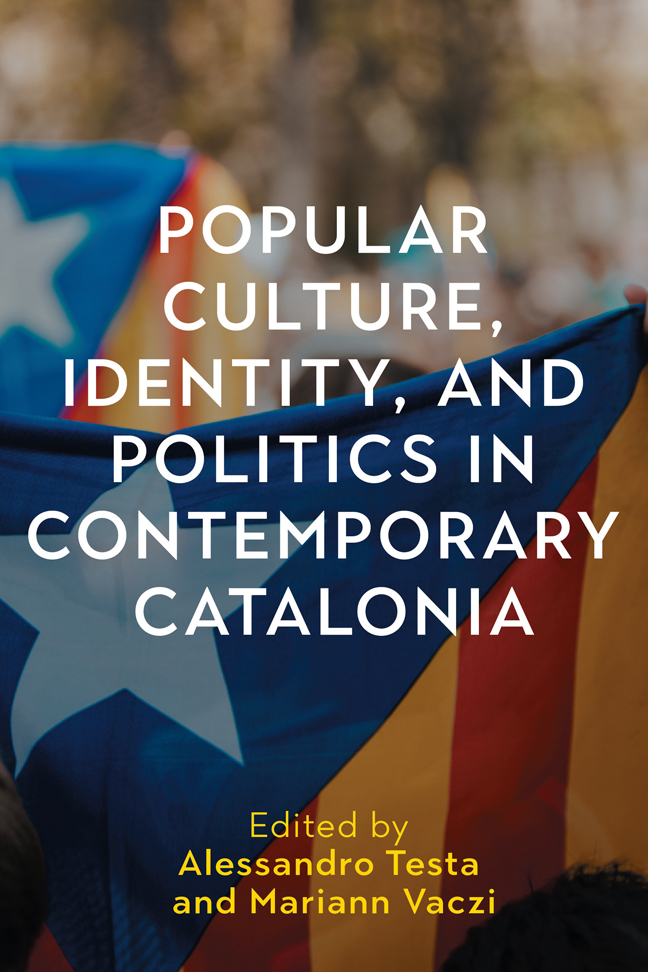Book contents
- Frontmatter
- Contents
- List of Illustrations
- List of Contributors
- Introduction: Culture, Identity, and Politics in Contemporary Catalonia
- 1 Castells, Myths, and Allegories of Nation-Building
- 2 The Ritual Making of Central Catalonia 1: National Identity and the Hanging of the Donkey
- 3 The Ritual Making of Central Catalonia 2: Comparses and the Dynamics of Inclusive Nationalism
- 4 Reclaiming the Cathar Past: At the Crossroads between Identity Politics and Tourist Economies in Catalonia
- 5 The Heritage of the Humiliated: Popular Resistance in Defense of the “Bous” in the Lands of the Ebro
- 6 Communities without Festivities? Community Effects, Transformations, and Conflicts after Covid-19 in Catalonia
- 7 Bon Profit! Food as National Identity in Catalonia
- Afterword: Beneath the Nation: Collective Creation and Civic Need
- Bibliography
- Index
1 - Castells, Myths, and Allegories of Nation-Building
Published online by Cambridge University Press: 02 March 2024
- Frontmatter
- Contents
- List of Illustrations
- List of Contributors
- Introduction: Culture, Identity, and Politics in Contemporary Catalonia
- 1 Castells, Myths, and Allegories of Nation-Building
- 2 The Ritual Making of Central Catalonia 1: National Identity and the Hanging of the Donkey
- 3 The Ritual Making of Central Catalonia 2: Comparses and the Dynamics of Inclusive Nationalism
- 4 Reclaiming the Cathar Past: At the Crossroads between Identity Politics and Tourist Economies in Catalonia
- 5 The Heritage of the Humiliated: Popular Resistance in Defense of the “Bous” in the Lands of the Ebro
- 6 Communities without Festivities? Community Effects, Transformations, and Conflicts after Covid-19 in Catalonia
- 7 Bon Profit! Food as National Identity in Catalonia
- Afterword: Beneath the Nation: Collective Creation and Civic Need
- Bibliography
- Index
Summary
On June 8, 2014 at noon, eight human tower teams (colles) built eight towers (castells) simultaneously in eight European capitals at the event called “Catalans Want to Vote: Human Towers for Democracy”. The rally was organized by Òmnium Cultural, one of the two most influential Catalanist pro-independence NGOs. The deployment of this traditional sport across Europe aimed to call international attention to Catalan desires to vote about the question of independence from Spain. The castells action fer pinya, which refers to the building of the base of a human tower, became analogous with laying down the foundations of a new country. This is how the rally's promotion explained the choice of this cultural performance for the vindication of voting rights:
Us Catalans will decide our future at a referendum. Together we build a base [fem pinya] for a better country. We believe in peace, effort and cooperation. We are a sovereign nation that wants to live in a normal country. Our dream is shared, our path is democracy. We want to tell the world because the world needs to know. […] All the human tower groups share the same objective: an important protest of the country to project ourselves in the world. From the base [pinya] of a human tower to the enxaneta [the child who “crowns” the tower by waving], together we touch the sky. It is a chance to make our message reach Europe clearly: Catalans want to vote. Help us build a base! (Òmnium Cultural 2014).
The day after the Catalans Want to Vote rally in 2014, images of the event populated the media, showing human towers on the most emblematic squares and next to the most famous buildings of Europe: Berlin's Alexanderplatz, Brussel's Grande Palace, Geneva's Place des Nations, Lisbon's Belem Tower, London's Tower Bridge, Rome's Gianicolo, Paris's Eiffel Tower, and Barcelona's Sagrada Familia towers.
“Building castells is building nation”, I heard repeatedly from castellers at similar rallies during my two-year-long fieldwork in Catalonia, where I performed with the Castellers de Barcelona “gang”. As expressions of desire and ideology, buildings have their particular mythic effects; architecture, Roland Barthes writes, is “always a dream and a function” (1979, 6).
- Type
- Chapter
- Information
- Publisher: Boydell & BrewerPrint publication year: 2023



